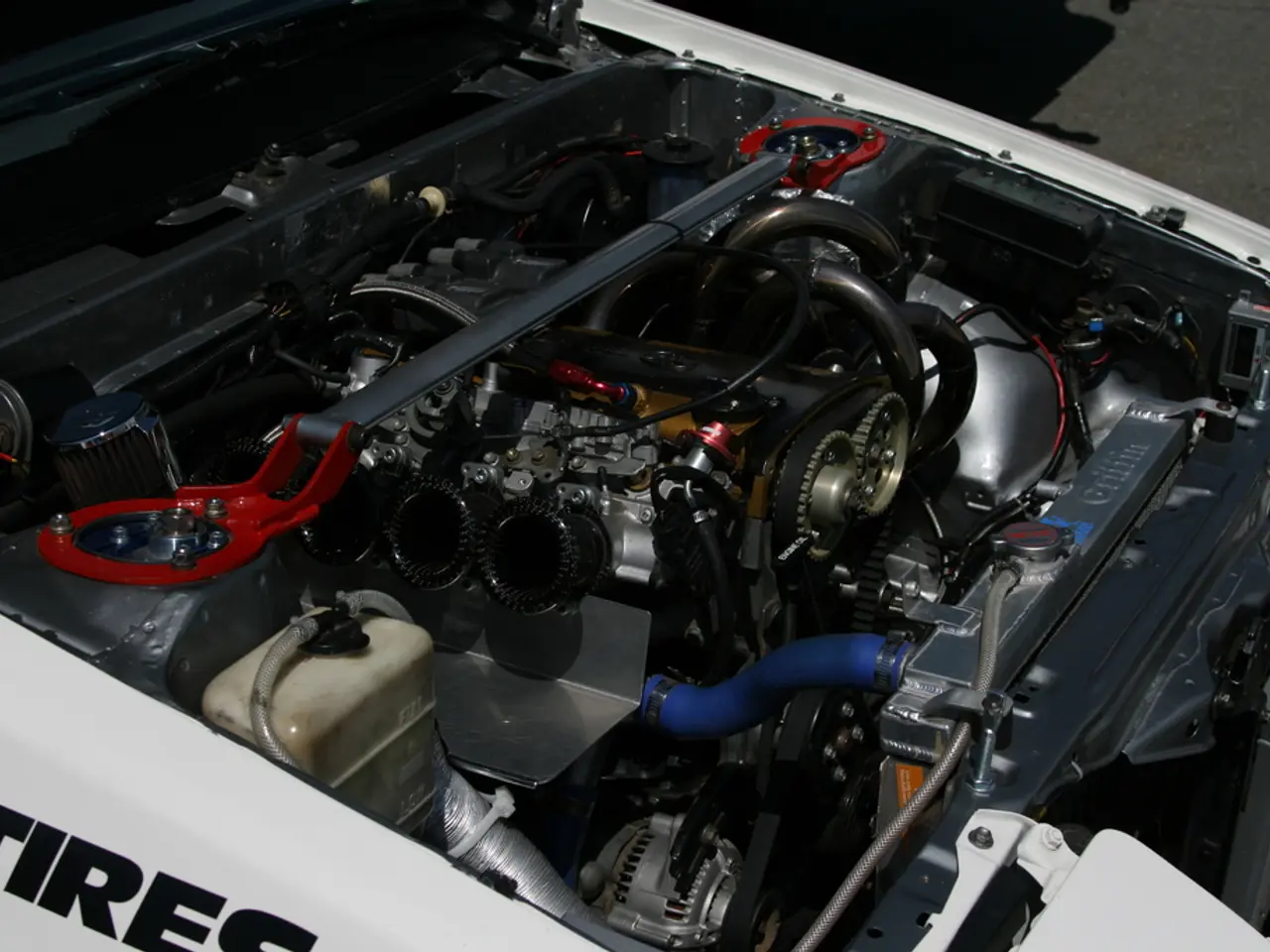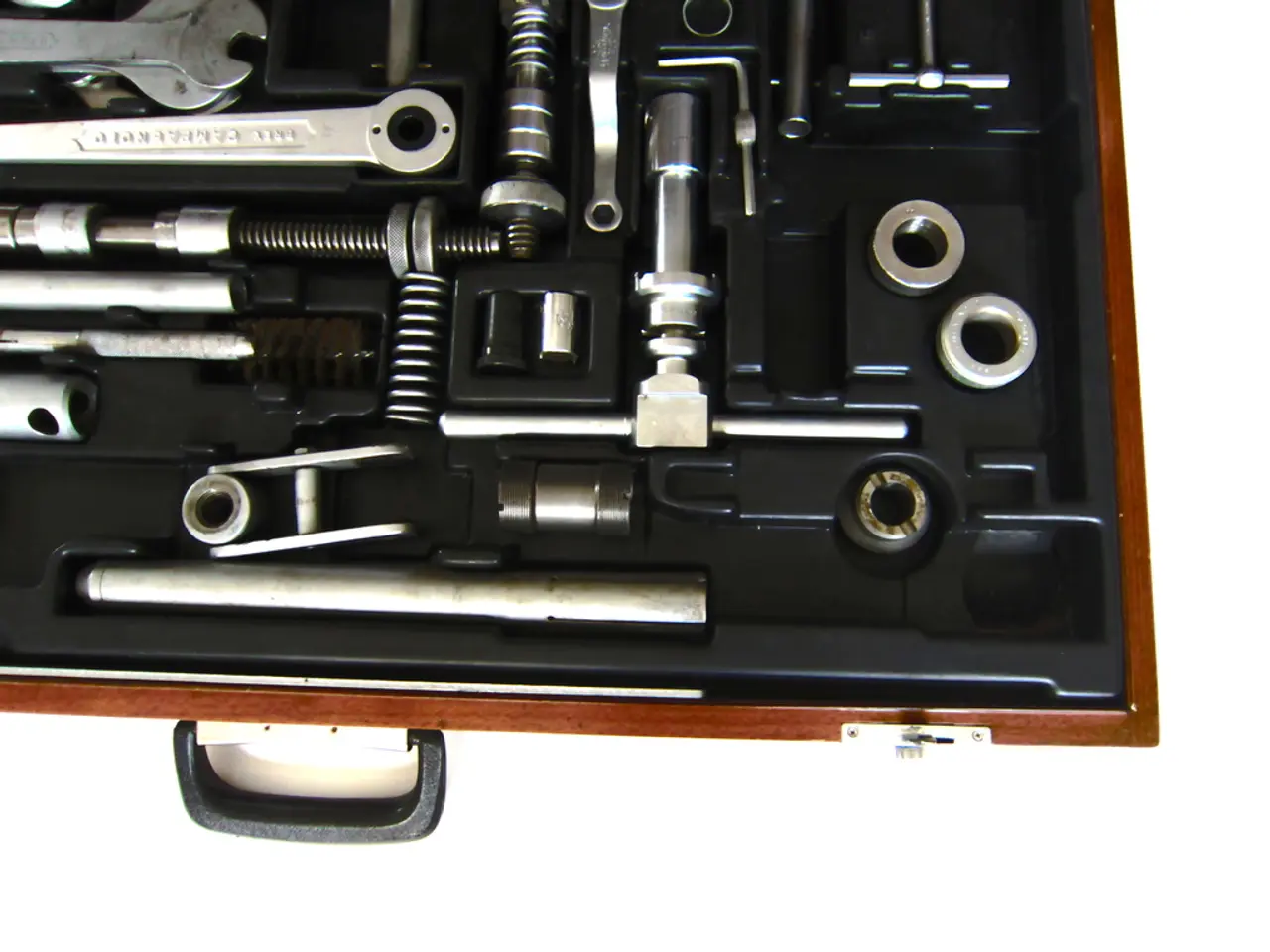Renewable Energy Storage Systems Bolstered by Electric Vehicle Battery Applications in BESS Projects Progression
In a significant stride towards a greener future, the repurposing of electric vehicle (EV) batteries for Battery Energy Storage System (BESS) construction is gaining momentum. This innovative approach offers numerous benefits for both the environment and the economy, while enhancing the resilience of energy systems.
One of the most compelling advantages of this practice is its environmental impact. By diverting used EV batteries from landfills, harmful environmental impacts associated with battery disposal are minimised. Furthermore, the conservation of raw materials is a significant plus, as repurposing reduces the need for new raw material extraction. This, in turn, lessens the environmental footprint of mining and manufacturing new batteries, contributing to climate change mitigation efforts.
The economic benefits are equally noteworthy. Using second-life EV batteries is generally more cost-effective than manufacturing new batteries, lowering the costs of energy storage infrastructure. This cost-effectiveness creates new revenue streams and fosters economic growth, as the repurposing process generates business opportunities in collection, assessment, refurbishment, and redeployment industries.
Moreover, second-life batteries can enable storing excess renewable energy and providing backup power, which enhances grid stability and can lead to more consistent energy pricing. This stability can help to maintain affordable energy prices, a crucial factor for businesses and households alike.
Technically, EV batteries often retain about 80% of their capacity after vehicle use, making them suitable for stationary storage applications that are less demanding than vehicle propulsion. This extended battery lifespan supports renewable energy integration, as repurposed batteries can store intermittent renewable energy (e.g., solar, wind) and release it during high demand or low generation periods, facilitating cleaner energy systems and reducing reliance on fossil fuels.
Notable examples of this trend can be found across Europe. The Amsterdam's Johan Cruijff ArenA runs partly on a 3 MW BESS built with second-life Nissan LEAF batteries. Similarly, the Port of Amsterdam uses repurposed EV packs to balance local grid loads and reduce emissions from port operations. In the UK, Connected Energy's E-STOR units reuse old Renault EV batteries to help businesses store solar power and cut demand charges.
The collaboration between automakers and energy companies indicates a growing focus on extending battery lifecycles beyond their initial use in vehicles. Brands like Nissan, Renault, and Tesla are partnering with energy companies to extend battery lifecycles, demonstrating the feasibility of a more circular energy system.
In conclusion, repurposing EV batteries for BESS construction is a win-win solution that promotes environmental sustainability, economic efficiency, and energy system resilience by extending battery life, reducing waste, and enabling more affordable and reliable energy storage solutions. This trend is set to become a mainstream solution for grid-scale storage as cities add more renewable energy and retire fossil-fuel power plants.
References: [1] European Commission. (2019). Circular Economy Action Plan. Retrieved from https://ec.europa.eu/info/publications/circular-economy-action-plan_en
[2] International Renewable Energy Agency (IRENA). (2020). Second-life Electric Vehicle Batteries for Grid-scale Storage. Retrieved from https://www.irena.org/publications/2020/Mar/Second-life-electric-vehicle-batteries-for-grid-scale-storage
[3] U.S. Department of Energy. (2021). Second-life Electric Vehicle Batteries. Retrieved from https://www.energy.gov/eere/vehicles/articles/second-life-electric-vehicle-batteries
[4] European Automobile Manufacturers' Association (ACEA). (2021). Battery Second Life: A Key Element of the Circular Economy. Retrieved from https://www.acea.auto/uploads/2021/04/ACEA-Battery-Second-Life-A-key-element-of-the-circular-economy.pdf
- The innovative approach of repurposing electric vehicle (EV) batteries for Battery Energy Storage System (BESS) construction, a practice gaining momentum, offers benefits for both the environment and the economy, while enhancing energy system resilience.
- By using second-life EV batteries, the conservation of raw materials is a significant plus, as repurposing reduces the need for new raw material extraction, lessening the environmental impact of mining and manufacturing new batteries.
- The economic benefits of this practice are equally noteworthy, with the repurposing process generating business opportunities in collection, assessment, refurbishment, and redeployment industries.
- The extended lifespan of EV batteries supports renewable energy integration, as they can store intermittent renewable energy and release it during high demand, facilitating cleaner energy systems and reducing reliance on fossil fuels.
- The collaboration between automakers and energy companies, such as Nissan, Renault, and Tesla, in extending battery lifecycles, indicates a growing focus on a more circular energy system and the feasibility of mainstream solutions for grid-scale storage.




